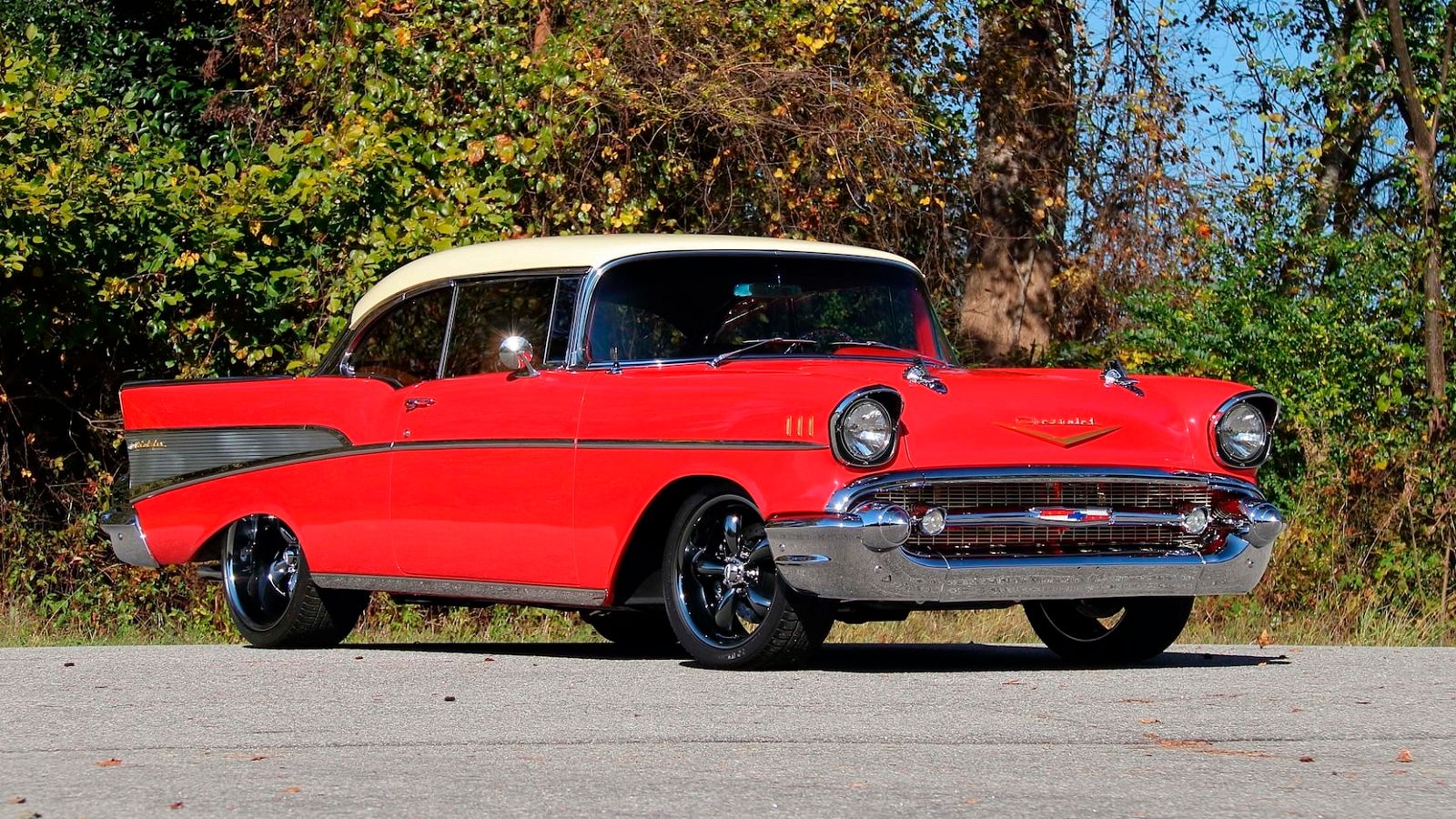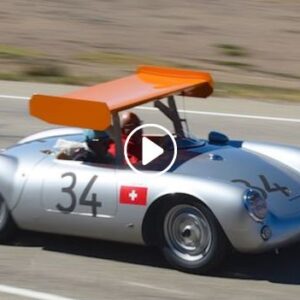It has been touched on a couple of times already, but to clarify, the Bel Air was not its own model line in 1957. It was simply the highest trim level in the ’57 Chevy lineup, being added onto the base Chevy 150 or the mid-level Chevy 210 model to make it into what is now called the 1957 Chevy Bel Air. That does not mean that calling the car a ’57 Bel Air is incorrect because that is the name that the vehicle has gone by since the ’50s. Back then, trim levels were not something that consumers looked at when purchasing a used car, so unless the buyer special ordered the car from the factory, it was not important to know that the Bel Air was only a trim level of the more basic Chevy full-size models.

Back in 1957, GM published a two-page advertisement claiming that “Chevy Puts The Purr In Performance.” This may seem like a bold statement when considering that the two other big Detroit automakers were also producing cars to take their own shares of the market. Cars like the Ford Thunderbird and even the AMC Rambler from an up-and-coming American company made high-end luxury cars that were also on the top of the performance food chain. The Chevy Bel Air, however, is still one of the best full-sized luxury cars with performance simply because they created cars that could purr like a kitten or roar like a lion.
6 2nd Gen Bel Air Came With Numerous Engine Options

The 1957 Chevy Bel Air was the second generation’s last year, which lasted only three years before the third generation took over the production lines. The ’57 came with tons of interior options that created a car that could be as luxurious as a Caddy, but one thing not many people remember is that the vehicle came with numerous engine options. The small, more fuel-efficient 3.5-liter or 3.9-liter inline-six could be opted for, or for the first time, one of the larger, more powerful V8s could be chosen when ordering the car. The two most popular eight-cylinder engine choices were the 4.3-liter which could push out 140 horsepower, and the 4.6-liter, which produced over 200 horsepower.
5 Bel Air Had The Same Engine Option As The Chevy Corvette

4.6-liter is not an engine designation that many classic car lovers use because it was more commonly called the 283 V-8 in the ’50s. The 283 was an engine option available when ordering the Chevy Bel Air, but many may not know that it was the same 283 that was placed under the hood of the 1957 Chevy Corvette as well.
It was also one of the first GM engines to use a fuel injection system known as the Chevy Ramjet constant-flow injection system. The 283 with a carburetor setup could pump out up to 245 horsepower, while the same engine with fuel injection could reach horsepower numbers near 250. The 283 could be set up with one or two carbs or two separate Ramjet configurations that could offer more fuel, which meant more horsepower.
4 Bel Air Came With Three Transmission Options

Muscle and performance car lovers enjoy slamming through manual shift gears, which is why so many classic cars were offered with that type of transmission. The manual shift gears allowed the driver to redline the RPMs to maintain high speeds. So, of course, the 1957 Chevy Bel Air was offered with a three-speed manual transmission, but the Bel Air was not made solely to fit the needs of buyers who wanted thrills on the road.
The car was also built for families that needed a dependable daily driver. A car that was easy to drive and comfortable enough to take on long road trips. That is why the ’57 Chevy was also offered with one of two automatic transmissions; the two-speed Powerglide or the three-speed Turboglide.
3 1957 Bel Air Was A Part Of The “Tri-Five”

Throughout history, some groups of cars have caught the attention of classic car collectors and classic muscle car enthusiasts. One of the most iconic groups for the Chevy brand is arguably the “Tri-Five.” This group of 1955, 1956, and 1957 Chevy cars included the base-line 150, the mid-line 210, the top trim level Bel Air, and the famous 1957 Chevy Nomad. It is a unique group of cars with one thing in common: they can be built into some of the meanest, best-looking classic muscle cars of all time.
2 “The Fuelie” Chevy Bel Air Was Unique And Rare

It can probably be guessed that the term “fuelie” relates to the 283 Chevy in 1957 that was designed with the Ramjet injection system. Fuel injection was a newer concept that the engineers at Rochester were working on perfecting, but since Chevy jumped the gun a little, they were forced to make things work. The original fuel injection that went on the engine for the full-size Bel Air and the mid-sized Corvette was not perfect, but it worked well enough to propel the car to faster times that were more consistent.
Unfortunately, since the new fuel delivery system was new to the company and to the consumers, it was not often chosen as an option when ordering. This makes the 1957 “fuelie” not only unique but extremely rare to find unless the engine has since been converted over from the basic carburetor system.
1 Two-Door Nomad Wagon Joined The Bel Air Lineup

The 1957 Chevy may be one of the most recognized classic cars of all time, but when it comes to unique cars of the ’50s, one that comes up time and again is the Chevrolet Nomad. It was an add-on addition to the Chevy line that took the basic station wagon and made it into a mean-looking beast on and off the track. The car was given the same engine and transmission options as the Bel Air, but the rear doors were removed, leaving only two front doors that occupants had to climb in and out of. It was a unique car that has been forgotten along with the Chevy Bel Air, but thankfully history will always hold a place for the ’57 Chevy.





